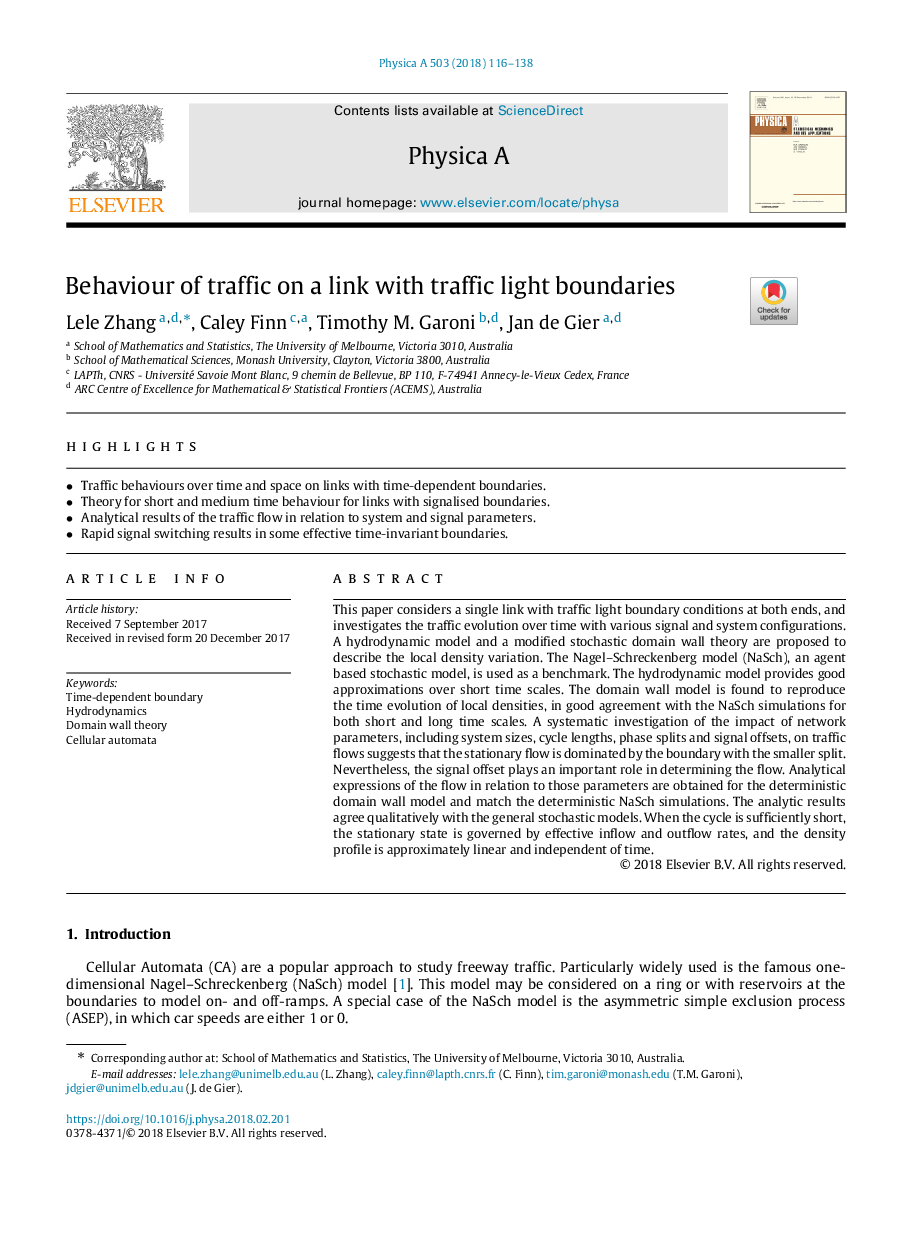| Article ID | Journal | Published Year | Pages | File Type |
|---|---|---|---|---|
| 7375354 | Physica A: Statistical Mechanics and its Applications | 2018 | 23 Pages |
Abstract
This paper considers a single link with traffic light boundary conditions at both ends, and investigates the traffic evolution over time with various signal and system configurations. A hydrodynamic model and a modified stochastic domain wall theory are proposed to describe the local density variation. The Nagel-Schreckenberg model (NaSch), an agent based stochastic model, is used as a benchmark. The hydrodynamic model provides good approximations over short time scales. The domain wall model is found to reproduce the time evolution of local densities, in good agreement with the NaSch simulations for both short and long time scales. A systematic investigation of the impact of network parameters, including system sizes, cycle lengths, phase splits and signal offsets, on traffic flows suggests that the stationary flow is dominated by the boundary with the smaller split. Nevertheless, the signal offset plays an important role in determining the flow. Analytical expressions of the flow in relation to those parameters are obtained for the deterministic domain wall model and match the deterministic NaSch simulations. The analytic results agree qualitatively with the general stochastic models. When the cycle is sufficiently short, the stationary state is governed by effective inflow and outflow rates, and the density profile is approximately linear and independent of time.
Keywords
Related Topics
Physical Sciences and Engineering
Mathematics
Mathematical Physics
Authors
Lele Zhang, Caley Finn, Timothy M. Garoni, Jan de Gier,
